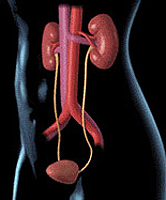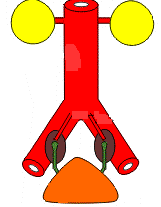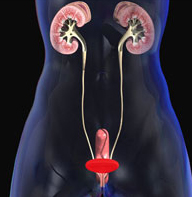What is hydronephrosis? How to diagnose and treatment of hydronephrosis? Answers to these questions you will find in the article.
Content
Hydronephrosis
Hydronephrosis is a kidney disease that is characterized by
expansion of its credit system due to the violation of urine outflow from
Renal Lohanca.
To factors that impede the outflow of urine from the pelvis include
Various violations of the patency of the gluhan and ureteral segment:
Pathological narrowings and dysplasia, emergence anomalies
Ureterals, periuretenerite (adhesion process around
ureter), fixed uretechnic gear, add and
abnormal kidney vessels, ureteral atony, kidney anomalies, valves and
diverticulus of ureters, urolithiasis, nephroptosis, etc.
Three stages of the development of hydronephrosis are distinguished:
- I stage - only renal pelvis is expanded, the kidney function is not changed or violated in an easy degree.
- II
Stage - kidney dimensions increased by 15-20%, Lohanka significantly
expands, the wall is thinned. Evacuator violated significantly
Lohanki ability. The kidney function is reduced by 20-40%.
- III Stage - kidney dimensions increased by 1.5-2 times. Lohanka I
Cups are sharply expanded, the kidney is a multi-chamber cavity.
There is a sharp violation of the evacuation ability of a locher. Function
The kidneys are reduced by 60-80% or more.
Manifestations of hydronephrosis
Clinical manifestations of hydronephrosis are diverse and depend on the cause
Certaining the level of its localization, the degree of violation of urine outflow
from the kidney pellets, the anatomical features of the pelvis, one-sided
or a bilateral nature of the process, from the complications of the disease and.
The most frequent symptoms in patients with hydronephrosis are:
 Pain in the lumbar region, a stupid character with periodic attacks of renal colic
Pain in the lumbar region, a stupid character with periodic attacks of renal colic
- Palpible tumor in the hypochondrium caused by the increase in the kidneys in size
- Hematuria (the presence of blood in the urine) may be total, lasts
from a few hours before the day, more often happens. Appearance
Hematuria in hydronephrosis contributes to chronic pyelonephritis and
urolithiasis disease
- Muddy urine due to chronic pyelonephritis and the presence of pus and large amounts of salts in the urine
- Ailment, fast fatigue, reduction of working capacity, bad dream and others.
- Chronic renal failure develops with
A bilateral process of the course of the disease is chronic.
The symptoms described can be combined or alternate and completed, and
also strengthen, weaken and even disappear.
How to diagnose hydronephrosis
Primary
The study method when treating patients due to pains in
lumbar region or blood presence in urine is ultrasound
Study of the kidneys and bladder. At hydronephrosis is detected
An increase in the kidneys in size, the expansion of the cup-laughter system,
Reducing the thickness of Parenhima. Characteristic signs of obstruction
Loccanic urete segment are the extension of the strip
kidney systems and not visual visualization.
Basic
The methods of diagnosis of hydronephrosis are radial methods:
X-ray methods and computed tomography with
Contrasting.
From radiological methods apply:
- Intravenous Urography
- Retrograde ureteropelography
Radiographic methods allow you to reveal the level of obstruction,
The degree of extension of the kidney system, evaluate the function of both
kidney.
Currently, the diagnosis of hydronephrosis is widely used
Radioisotope research methods: Radioisotope Renography,
Dynamic Scyntigress with Computer Renography, Radioisotope
Renarangiography. These methods allow you to detail functional
State of the kidneys, the stage of the hydronephrotic process.
Most
Modern methods of diagnostics are computer and magnetic
tomography with the introduction of contrast drugs that allow
detect the causes of hydronephrosis, kidney anomalies and renal vessels,
Level and length of changes in the ureter.
How is hydronephrosis treatment
Treatment of patients with hydronephrosis is mainly
Operative.
Patients with I stages of hydronephrosis in the absence of
chronic inflammatory process and urolithiasis shown
Dynamic observation.
At stage II, surgical organic equipment is shown, the purpose of
which is the restoration of the passage of urine in the ureter.
Traditionally, the operation is performed, the essence of which came down to removal
The narrowed uretera segment and the implementation of the new piiveureteral
fustia. The modern and most effective method of treatment is
Laparoscopic technique at which it is completely restored
kidney and ureter function. Patients are in the hospital short
Term (3-5 days). This is due to the fact that during laparoscopic
Operations There are no big cuts of skin and muscle.
With the III stage of hydronephrosis, the kidney saving is impossible and produced
Her removal. Otherwise, infection of the affected kidney is possible
And in this case, an emergency operation is shown. When
The lack of pronounced inflammation is also possible and preferably
Laproscopic kidney removal.
Thus, laparoscopic techniques play a huge role
In the treatment of patients with hydronephrosis. These techniques are
highly efficient and at the same time gentle for patients.









